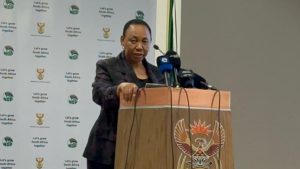Usually the large political parties collectively dominate elections to a massive extent. However recent by-elections, the last of which were held at the end of March, point to large gains for small parties like the Freedom Front Plus (FF+ )and the newly formed African Transformation Movement (ATM).
In three of the four by-elections on March 27 a small party obtained 30% of the votes cast cutting into the proportion of votes held by the African National Congress (ANC) and Democratic Alliance (DA).
This trend has prompted speculation about the implications for the upcoming general election in May. By-elections are notoriously poor indicators of how people vote in the country-wide elections.
Frequently by-elections hint at a wind-change in voter behaviour with the trend failing to materialise in later country-wide elections. At the heart of the anomaly is the low turnout typical of by-elections by-elections.
For example, during the 2016 Local government Elections voter turnout in the four wards referred to ranged from 48% to 78%. On 27 March turnout in the wards ranged from 30% to 48%.
The trends established in by-elections are typically reversed when turnout improves in country-wide elections. This suggests that the gains made by small parties in by-elections may dissipate when participation rates rise.
The graphic below compares the turnout in by-elections to the turnout in the last country-side election (Local Government Elections of 2016).

While these by-elections may be a poor indication of what will happen in the upcoming national election they remain useful indicators of what happens when turnout declines. As voter participation rates in the May election are expected to be low the by-elections hint at what can be expected.
Historically low voter turnout benefits the incumbent party. Generally the party that wins a ward tends to increase their share of votes in a subsequent by-election.
There are numerous reasons for this. The incumbent party usually has established organisation capacity to motivate supporters to come to the polls.
Opposition supporters may believe aggressive campaigning is futile as the incumbent holds an unassailable lead anyway. The stakes for political parties in by-elections may be low. While winning by-elections may get their candidate a job it seldom significantly alters the balance of power in the municipality.
These factors historically contributed to the incumbent party benefiting from low turnouts. This incumbent advantage was particularly clear in the first decade of by-elections. However over the years this trend has been reversed.
After 2015 low turnout tended to prejudice the incumbent i.e. the incumbent’s share of votes declined with turnout rates. This is evident in the performance of ATM and FF+ in the latest by-elections.
In ward 18 of Mogale City the FF+ obtained 6% of the votes in 2016. In the 27 March by-election they won 30% of the vote. In 2016 the FF+ got 283 votes.
This increased to 528 votes last month. By contrast the number of votes cast for the incumbent (the DA) dropped from 4 101 votes to 1 261 votes in March. In May the DA was able to get only 30% of their previous supporters back to the polls.
By contrast the FF+ was able to almost double their number of votes. This trend is repeated to varying degrees and permutations across recent by-elections.
The by-elections now suggest reduced enthusiasm for the established parties and a desire to find alternatives.
However, it is not good news for smaller parties in general. In the recent polls small parties in general (i.e. other than the FF+ and ATM) did not fare well. In Nyandeni ward 21 the newly formed ATM party won thirty percent of votes cast shaving the ANC’s majority by 16%.
Support for the other parties like the Economic Freedom Fighters (EFF) and United Democratic Movement (UDM) remained insignificant. In the Mogale by-elections smaller parties (other than the FF+) similarly failed to perform significantly better.
The changing trend in by-elections suggests that the major parties (ANC, DA etc.) will fare poorly if voter turnout in May is poor.
There are already indications that the voter participation rate in May will be low – suggesting that the main political parties should ready themselves for disappointment.






